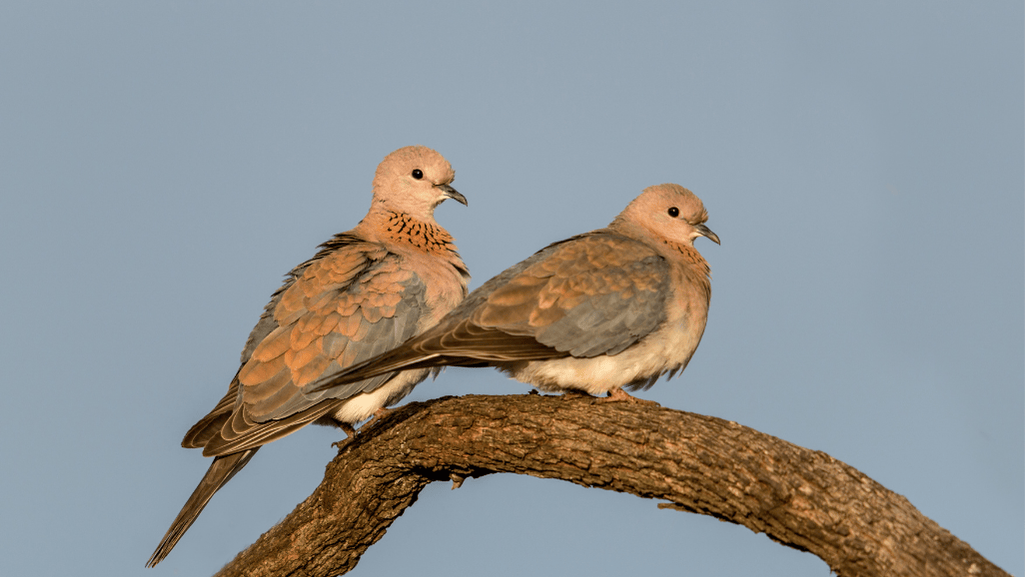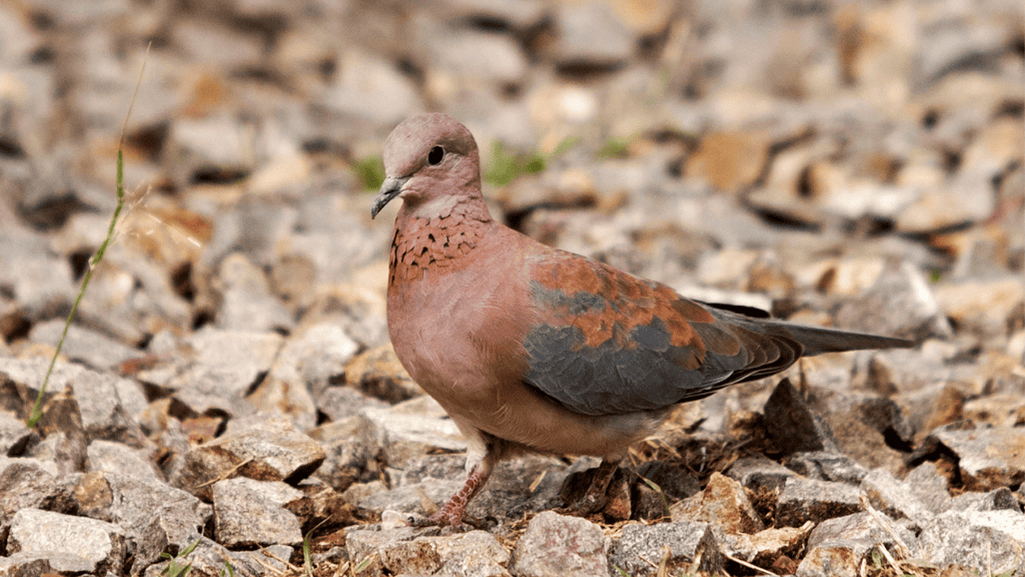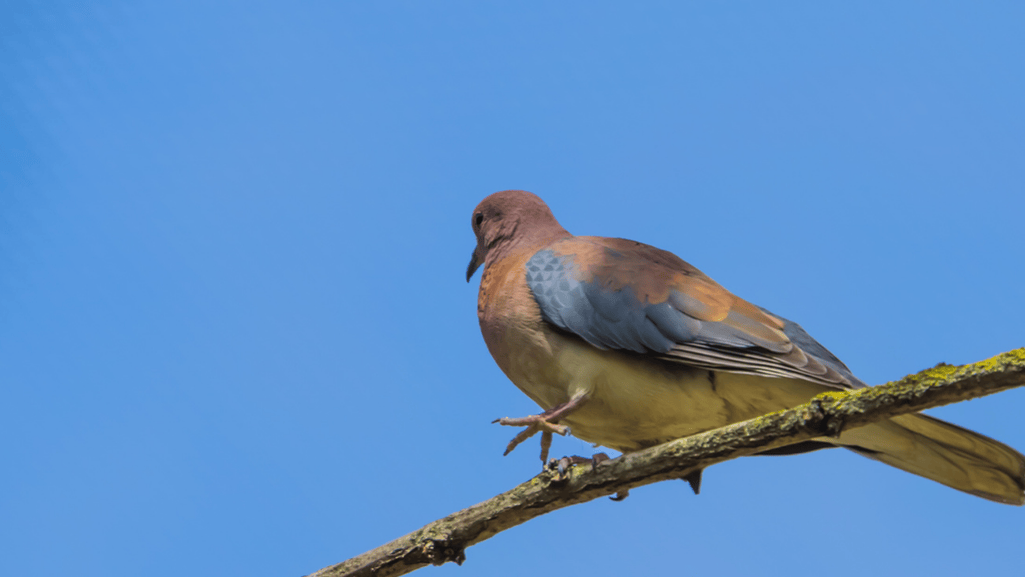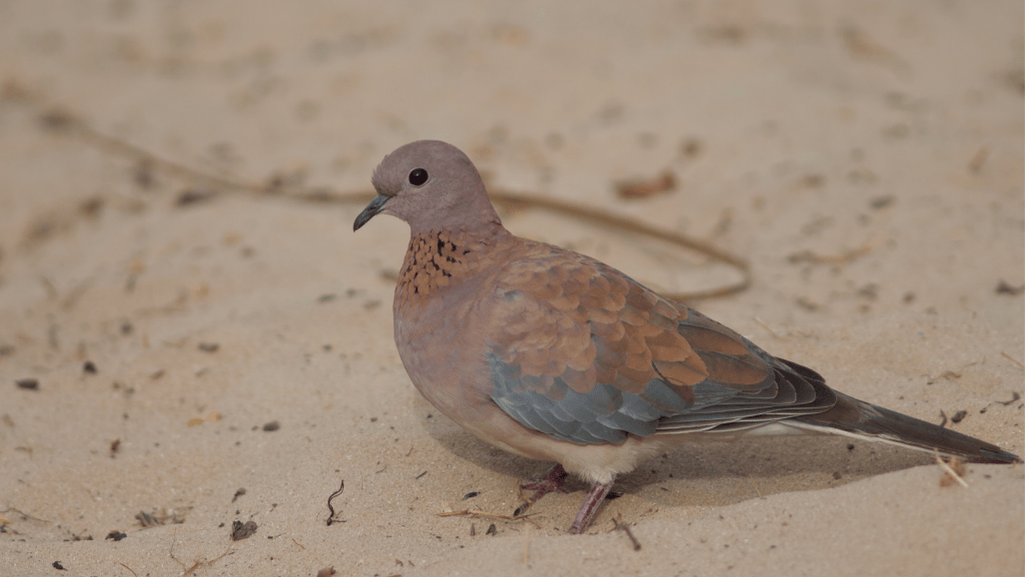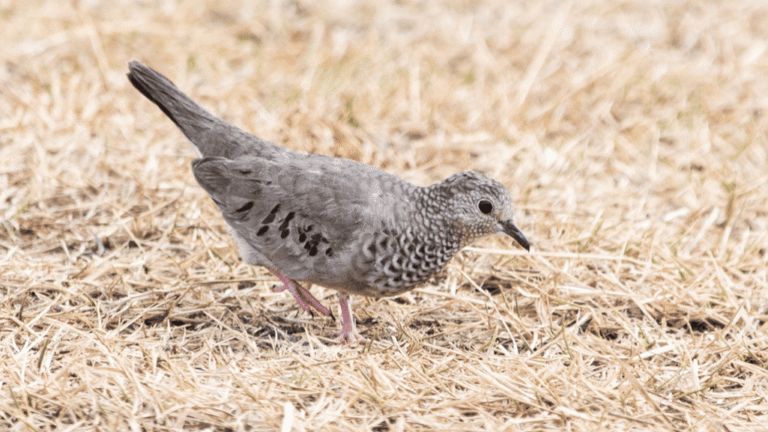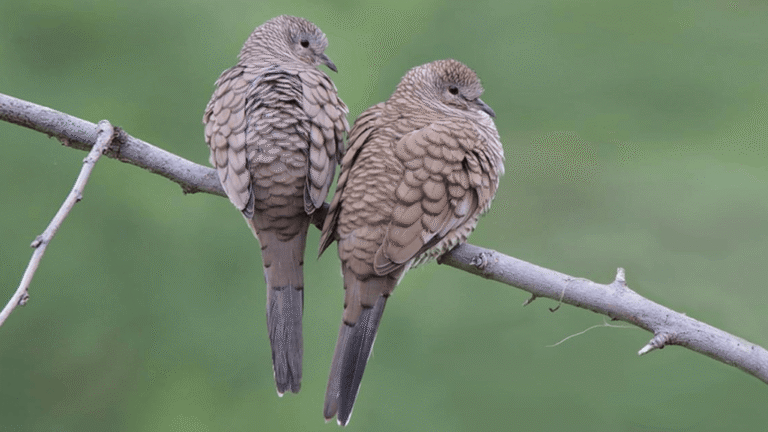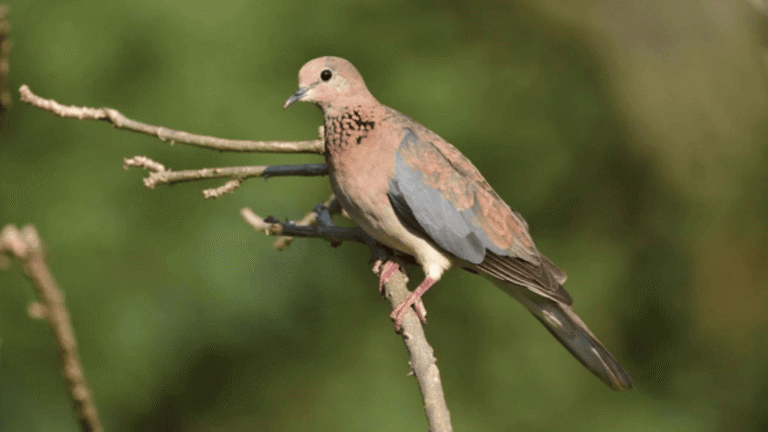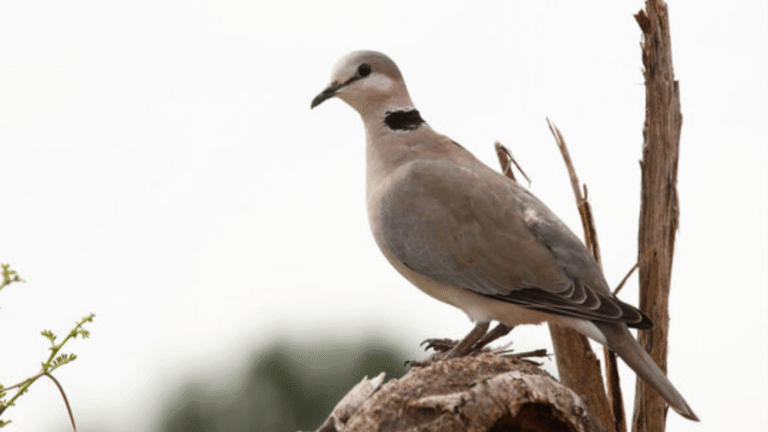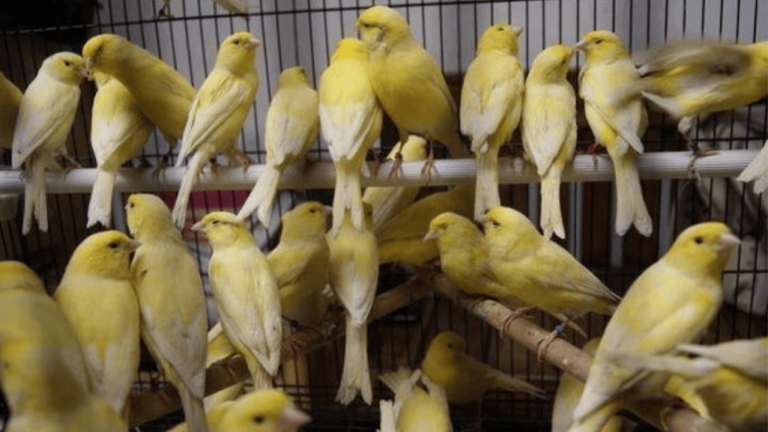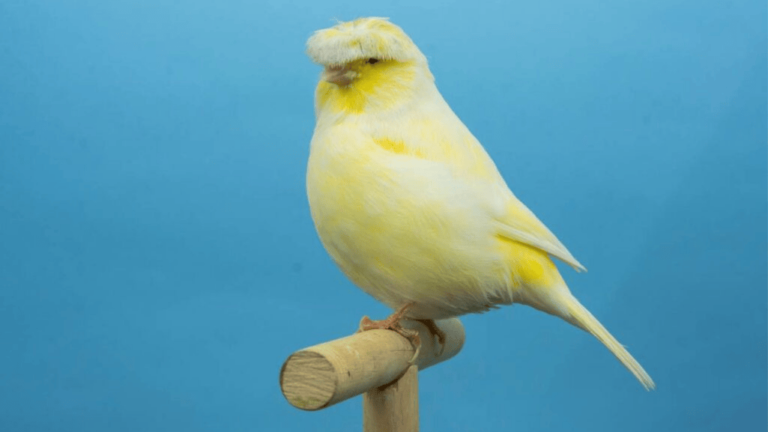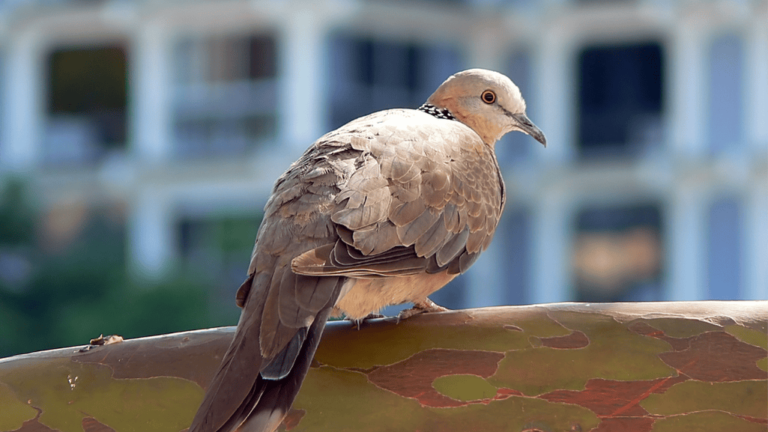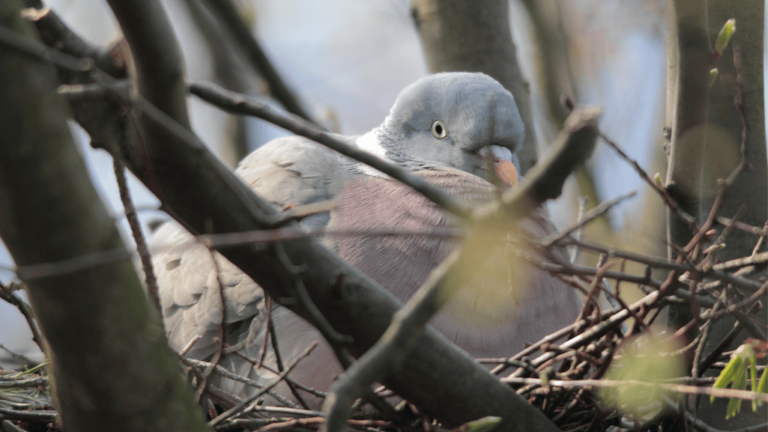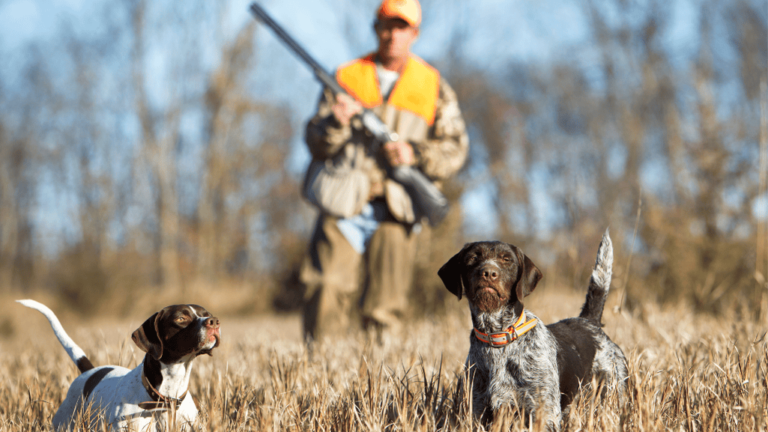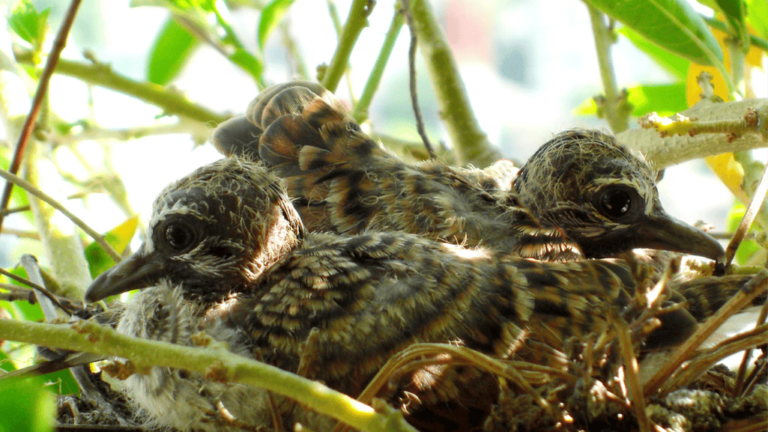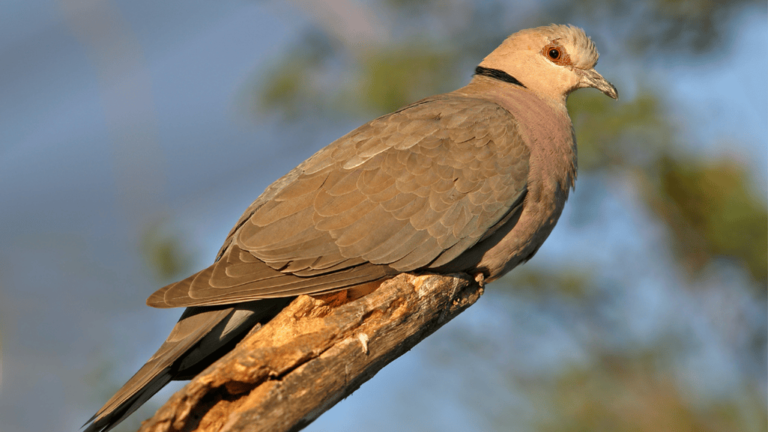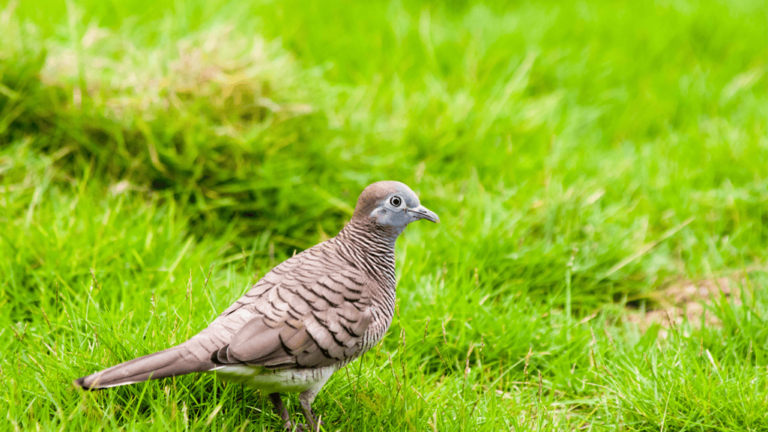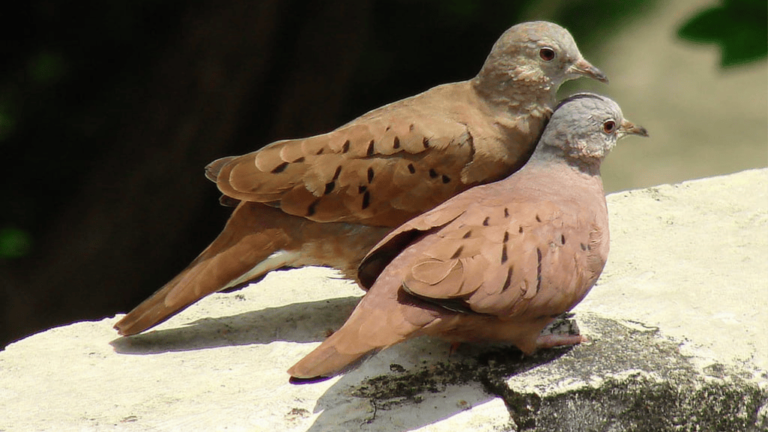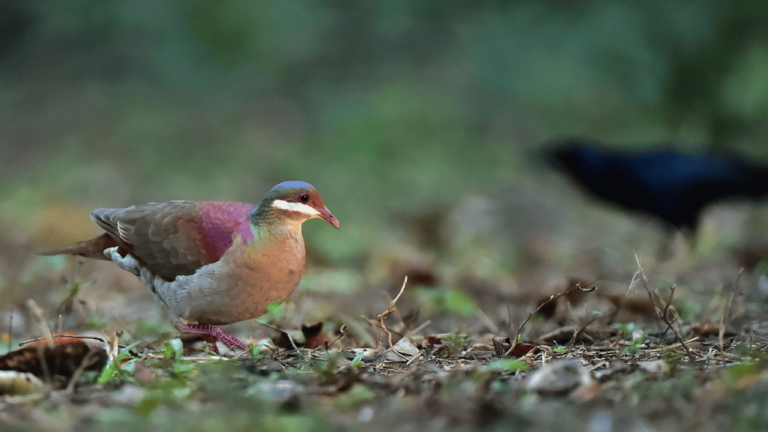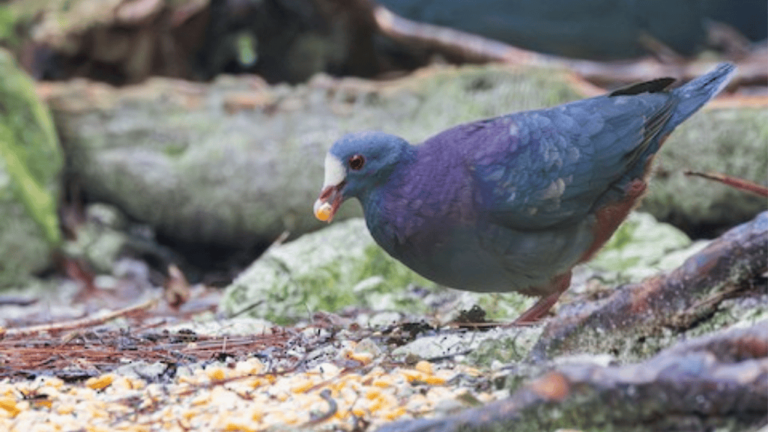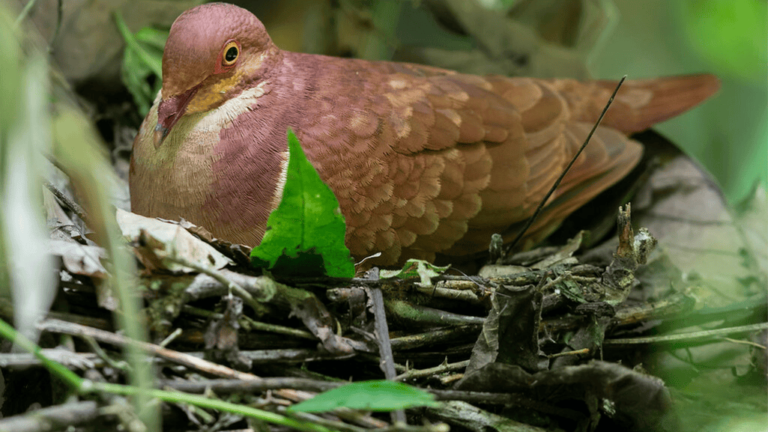Welcome to the guide on Senegal Dove care. These birds, symbols of peace, need careful avian care to thrive in captivity. We’ll cover the basics of caring for them. This includes creating a home that feels like their natural habitat and meeting their food and social needs.
Key Takeaways
- Recognizing the vitality of tailored environments and diets for the Senegal Dove.
- Focusing on the similarities and necessities in feeding habits between wild and captive Senegal Doves.
- Understanding the importance of socialization for the contentment of these graceful birds.
- Adopting practices that protect and encourage the proliferation of Senegal Doves in captivity.
- Addressing common health concerns and ensuring proactive care for these avian companions.
Understanding the Senegal Dove
The Senegal Dove, known scientifically as Spilopelia senegalensis, is a fascinating bird for birdwatchers and scientists alike. Learning about Senegal Dove identification and Senegal Dove facts can make birdwatching more exciting. This dove, also known as the Laughing Dove, lives in many places from Africa to Asia.
Identification and Appearance
To spot a Senegal Dove, look for its size and colors. It’s about 25 to 27 cm long with a wingspan of 40 to 45 cm. It has a pinkish-brown body with orange hints, brown wings, and a cream-colored belly. The dove’s colors can change based on where it lives, with desert birds looking paler.
Both males and females look similar, but males might have richer colors. Their grey beaks and pink-red legs help tell them apart. You can find them in cities and villages with lots of hedges.
Distinctive Traits and Behaviors
The Senegal Dove shows how adaptable and social it is. They eat seeds, insects, and plants. You usually see them alone or in small groups, looking for food on the ground. This makes them easy to spot for birdwatching tips.
They breed in different ways depending on where they live. Some pairs may have more than one brood in a year, using the same nest. This is interesting for those who watch these birds in the wild or cities.
The Senegal Dove is not considered endangered, but it faces threats from hunting and the pet trade in some places. Knowing this is important for birdwatchers who want to watch birds responsibly.
Comparing the Senegal Dove with other birds, like the Rock Parrot, can be interesting. You can learn more about these birds and their unique traits here. This can help us appreciate the diversity of birds and their special ways of living.
Caring for Your Senegal Dove
Looking after Senegal Doves ensures they live a happy and long life. It’s important to know how to care for them. This includes the right food, living space, and health care. These factors greatly affect their health and happiness.
Optimal Living Conditions
To make a great home for your Senegal Dove, create an aviary like their natural habitat. They need lots of space to fly and a soft place to forage. Think of the African savannah when designing their home.
They like a moderate climate and good airflow. But, they need protection from extreme weather and predators. Adding plants like Phoenix Reclinata gives them natural shelter and makes their home look beautiful.
Diet and Nutrition Essentials
- Feeding them a balanced diet is key to their health. They eat seeds, grains, and some greens.
- Use different seeds like Canary seeds, Sesame seeds, and Nigella seeds. This variety mimics their natural diet.
- Young or breeding doves need a lot of protein. Lentils and peanuts are good sources, but make them small for easy eating.
- Don’t give them big, hard foods like whole corn and peas unless they’re finely chopped. They could choke on them.
- Adding multivitamins and minerals to their water is a good idea. It makes sure they get all the nutrients they need.
- Feeding them regularly and in moderation helps prevent obesity and nutrient shortages.
| Food Item | Benefits | Serving Size |
|---|---|---|
| Brown Rice | Rich in nutrients compared to white rice | Adjust according to the number of doves |
| Peanuts | High in protein, essential for growth and repair | Small amounts, finely ground |
| Sprouts | Additional nutrition, promotes digestive health | Frequent, small clusters |
| Canary Seeds | Standard for many aviary diets | Moderate daily amounts |
Looking after your Senegal Doves’ diet and living space is crucial for their health. Whether you’re starting a new home or improving an old one, focus on what they need. The right food and living space make them happy and healthy.
Social Behaviors of Senegal Doves
Senegal Doves show complex social behaviors that help them survive and thrive. They can be alone or with others, depending on their environment and breeding needs.
Communication and Interaction
Senegal Doves use sounds to talk to each other. They make cooing sounds to find mates and keep rivals away. This way of communicating is key to their social life in groups.
When they’re looking for a mate, they do more than just coo. They also bob their heads and fluff their feathers. These actions help them show interest and attract a partner.
Companionship Needs
Senegal Doves need friends, both when they’re breeding and not. They watch out for each other, taking turns to spot predators. This teamwork shows how much they rely on each other.
They also need strong relationships to breed successfully. Couples often groom each other, which strengthens their bond.
Understanding Senegal Dove behaviors is key for their conservation and care. By watching them, we learn about their social lives. This helps us manage their populations and protect their natural world.
Nurturing a Healthy Senegal Dove Population
The Senegal Dove population is key to our bird diversity, playing a big role in keeping nature in balance. We must work together to keep them healthy and their numbers up. By focusing on bird health and sustainability, we can create a great home for these soft birds.
Managing their numbers means watching their health and creating spaces that let them act naturally. Conservation efforts are key to fighting off dangers from predators and changes in the environment. A breeding program with a mix of genes is important for the Senegal Dove’s future.
- Keeping an eye on health signs to act fast if birds get sick, like from Aspergillosis or Bornavirus.
- Encouraging a mix of genes in breeding to keep the genetic pool strong.
- Teaching people and local communities to understand and help these birds.
- Watching over their health and fighting bird diseases.
- Supporting ethical ways of breeding birds.
- Keeping their homes safe to match their natural way of life.
Here’s a quick look at how different things affect the Senegal Dove’s health and survival:
| Aspect | Role in Conservation | Implemented Action |
|---|---|---|
| Genetic Diversity | Helps avoid health problems from too much inbreeding | Diverse breeding programs |
| Disease Monitoring | Helps spot and treat diseases early | Regular health checks and lab tests |
| Habitat Conservation | Keeps a good place for the birds to live | Protected areas and limited human contact |
| Public Awareness | Gets more people to support saving these birds | Teaching programs and working with others |
By keeping an eye on bird health, managing their homes, and teaching the public, we can help the Senegal Dove thrive. These actions not only protect this species but also help the whole ecosystem they live in.
Creating a Habitat for Your Senegal Dove
For those who love birds, creating a great bird habitat design is key for Senegal Doves. The main aim is to make a space that feels like their natural home. This means having open areas and places with lots of plants. This setup helps them act naturally, like foraging and nesting, which is good for their health and happiness.
When designing domestic aviaries, having different kinds of plants is important. You should have spots with tall plants for hiding and nesting. Senegal Doves like to search for food on the ground, so having safe plants and soft ground is a must. This helps them behave like they would in the wild.
- Area for ground foraging to mimic natural behaviors
- Low trees and dense shrubbery for nesting and privacy
- Open spaces to facilitate flight within the aviary
It’s also key to think about the layout of the space. The aviary should be big enough for the birds to fly around. If it’s too small, they might get stressed or sick. The size of the aviary affects how well they can live and be happy. For example, making sure there’s enough room to fly is very important.
| Feature | Description | Benefits |
|---|---|---|
| Ground Cover | Soft substrates and non-toxic plants | Encourages natural foraging behavior |
| Shrubbery | Dense, low trees | Offers privacy and nesting opportunities |
| Spacious Design | Ample room relative to dove’s wingspan | Prevents stress and promotes health |
Putting these things together makes a great Senegal Dove habitat. It’s all about making a space that’s like their natural home. This way, they can live a happy and healthy life in domestic aviaries.
Senegal Dove Diet Considerations
When planning a diet for the Senegal Dove, it’s key to know their nutritional needs and how they eat. They mainly eat seeds, but adding other foods helps them get all the nutrients they need.
Seed Selection
The Senegal Dove eats seeds that are similar to those in the wild. This diet supports their health and natural eating habits. They eat millet, canary seeds, and small grains every day. These foods give them the nutrients they need.
Supplemental Foods and Treats
Adding small insects, fresh fruits, and vegetables to their diet makes it better. These foods give them proteins, vitamins, and minerals that seeds don’t have. Foods like chopped apples, soft greens, and mealworms are great for their health.
| Food Type | Benefits | Recommended Frequency |
|---|---|---|
| Seeds | Provides basic sustenance, essential fats, and fibers | Daily |
| Insects | Protein source for muscle development and repair | 2 times a week |
| Fruits and Vegetables | Supplies vitamins and minerals for overall health | 3 times a week |
Feeding Senegal Doves should mimic their wild diet as much as possible. A mix of seeds, fruits, vegetables, and protein treats keeps them healthy. This diet also helps them eat like they would in the wild, avoiding diet problems in captivity.
Senegal Dove Breeding Practices
Effective Senegal Dove breeding is key for keeping healthy populations and boosting aviculture diversity. It’s all about meeting their special needs and behaviors for sustainable growth. The main goal is to create the right breeding settings for these delicate birds.
First, building the right nesting platforms is crucial. These should mimic the Senegal Dove’s natural home, helping them act naturally. Since breeding times vary by location, these platforms must match the local seasons.
For better Senegal Dove breeding, a stress-free and safe space is vital. This helps their mental health and boosts breeding chances. Knowing how doves behave during courtship, like their body language and sounds, aids breeders in creating the perfect mating conditions.
| Key Component | Description |
|---|---|
| Nesting Platforms | Simulate natural environment to encourage nest-building. |
| Stress-Free Surroundings | Essential for psychological well-being and reproduction. |
| Understanding Courtship | Crucial for facilitating natural breeding behaviors. |
Learning from other dove species can also help. For example, tips on Monal pheasant care, like diet and habitat, can aid Senegal Dove breeders.
These methods improve Senegal Dove breeding success and help aviculture as a whole. Breeders gain by understanding bird reproduction details. It’s not just about numbers; it’s about honoring and protecting these beautiful birds’ natural ways and well-being.
Migration Patterns and Senegal Dove Habitat
The Senegal Dove migration is a fascinating event that affects both local and global bird habitat preservation.
African collared-doves, including the Senegal Dove, live from Saudi Arabia’s south coast to Senegal and Mauritania. They also live in Ethiopia and Somalia. This shows how these birds have a big ecological impact across different ecosystems.
These doves love dry scrublands with acacia trees, especially near water or rivers. They also like open farms, grasslands, parks, and mangroves. Their ability to live in many places highlights the need for good conservation efforts to protect them and the environment.
Knowing how the Senegal Dove migration works is key to saving their homes. They move from dry north areas to places like Nigeria and Cameroon for food and better living conditions. This means we need to protect many places that help them live.
Their breeding habits also affect their migration. For example, they breed from September in Chad to all year in Senegal and Gambia. Keeping their homes safe during these times is crucial for their young to grow and thrive.
| Region | Breeding Season | Typical Habitat |
|---|---|---|
| Chad | September – October | Arid scrublands, near water |
| Sudan | December – June | Agricultural lands, grassy areas |
| Senegal/Gambia | Year-round | Scrublands, urban areas |
Their breeding and migration are closely linked, showing how important safe and lasting homes are. Keeping their homes safe helps not just the doves but also other species that depend on them for balance in nature.
For more info on their lives and how we can help, check out the Animal Diversity Web. It’s full of useful info for those wanting to make a difference.
Senegal Dove Health and Wellness
Keeping Senegal Doves healthy means paying close attention to both preventing illnesses and meeting their special needs as they age. We’ll look at how to keep these birds healthy, deal with diseases, and care for older birds.
Common Ailments and Prevention
Senegal Doves can get sick with avian diseases. One big problem is trichomoniasis, caused by Trichomonas gallinae. This disease is common in European turtle doves, affecting up to 86% in the UK and 93% in Europe. It harms birds by making it hard for them to molt, which is important for their health.
- It’s a good idea to check their health often to catch Trichomonas gallinae early.
- Keep their food and water clean to stop infections from spreading.
- Use treatments your vet suggests to help prevent outbreaks.
Signs of Aging and Care for Senior Doves
Older Senegal Doves may move less or feel pain, which means they need special care. Since they can live up to 20 years, it’s crucial to take good care of them.
- Feed them fresh fruits, veggies, and some seeds, and give them treats now and then.
- Watch for changes in their poop or how often they poop. If it’s less frequent or watery, they might be sick.
- Try to keep them calm when they go to the vet or have a vet come to them to make things easier.
Knowing how to handle the health issues of older Senegal Doves helps us take better care of them. By being proactive and responsive, we can make sure our pets live happy, healthy lives.
Conservation Efforts for the Senegal Dove
Efforts like Senegal Dove conservation are key to keeping nature diverse and balanced. They focus on wildlife protection and habitat restoration. These actions help vulnerable species all over the world.
Djoudj National Park is a vital place for many birds, including the Senegal Dove. Work to restore its habitat fights against climate change and farming. These threats harm the birds’ homes.
- Strengthening laws helps protect the Senegal Dove and others by reducing illegal hunting and habitat damage.
- Community programs teach people about their natural world. This encourages sustainable living that helps wildlife.
New wildlife protection laws give birds better safety. They set harsh penalties for actions that harm these species. This is especially true in areas full of life.
| Area | Species Observed | Population Notes |
|---|---|---|
| Djoudj National Park | Black-crowned cranes, Senegal Doves, etc. | Critical habitat for endangered species |
| Iles de Madeleine | Red-billed Tropicbird, various seabirds | Exclusive breeding ground in the region |
| UK (Reference) | Turtle Doves | Critically endangered, rapid decline in population |
International partnerships and funding support big conservation projects. These efforts protect habitats and fund studies on species like the Senegal Dove.
Actions like reforestation and wetland rebuilding help. They create safe places for wildlife. These efforts make ecosystems stronger, helping endangered species.
With efforts from many areas, there’s hope for the Senegal Dove and other species. Together, we can create a world full of life for the future.
Senegal Dove Behavior and Adaptability
The Senegal Dove is known for its beauty and skill in the air. It shows amazing adaptability in the wild and in human care. This adaptability affects their behavior, making them interesting to study in bird behavior research. It helps us understand their role in nature and their impact on the environment.
Putting Senegal Doves in controlled settings is challenging but also offers chances for research and bird lovers. Knowing about their eating habits, breeding, and social life helps in caring for them. This knowledge is key for their conservation.
Wild vs. Captivity: Behavior Differences
In the wild, Senegal Doves have a strong way of surviving. They find food and homes over large areas. But in captivity, they need a special environment that feels like their natural home. Things like light, food, and places to nest are set up to help them act naturally.
A study shows the challenges of keeping doves like the Senegal Dove in captivity. It highlights the need for the right environment (further reading).
Environmental Factors Influencing Behavior
Captivity changes how Senegal Doves survive. For example, they may not be as scared of predators as they are in the wild. This shows how adaptable they are to their surroundings. The design and social setup of their homes can also change their social and breeding behaviors.
Creating the best environment is key for their health and happiness. A guide on building an aviary for birds, especially toucans, can be very helpful (read more).
| Bird Family | Species | Characteristics |
|---|---|---|
| Columbidae | Laughing Dove | Monogamous, 25 cm in length, seeds and insects diet |
| Anatidae | Egyptian Goose | Common in wetlands, aggressive behavior noted |
| Cuculidae | Senegal Coucal | Known for distinctive calls, consumes insects and small reptiles |
Studying behavior and planning environments shows the importance of a full approach to caring for birds. The Senegal Dove’s adaptability, thanks to bird behavior research, gives us insights into how humans and wildlife can live together.
Conclusion
We’ve looked closely at the Senegal Dove, showing how complex these birds are. We’ve covered everything from their social life to how to care for them. With around 2.4 million to 8.2 million mature birds worldwide, we see the importance of expert knowledge in watching and protecting them.
Studies tell us about their nesting habits. They build their nests about 2.74 meters high and usually lay two eggs. This shows how consistent they are in breeding. Their diet, which includes seeds, fruits, and nectar, tells us what they need to survive. It also shows us the need for careful management to help them thrive, with a 25.6% breeding success rate.
The story of Montagu’s harriers and the Senegal Dove shows the beauty of birds in the Sahel region. Madge, a Montagu’s harrier, had a touching end near Diokoul in Senegal. Her story made the community realize how important these birds are. By working together, we can protect the Senegal Dove and make our world a better place for all birds.


